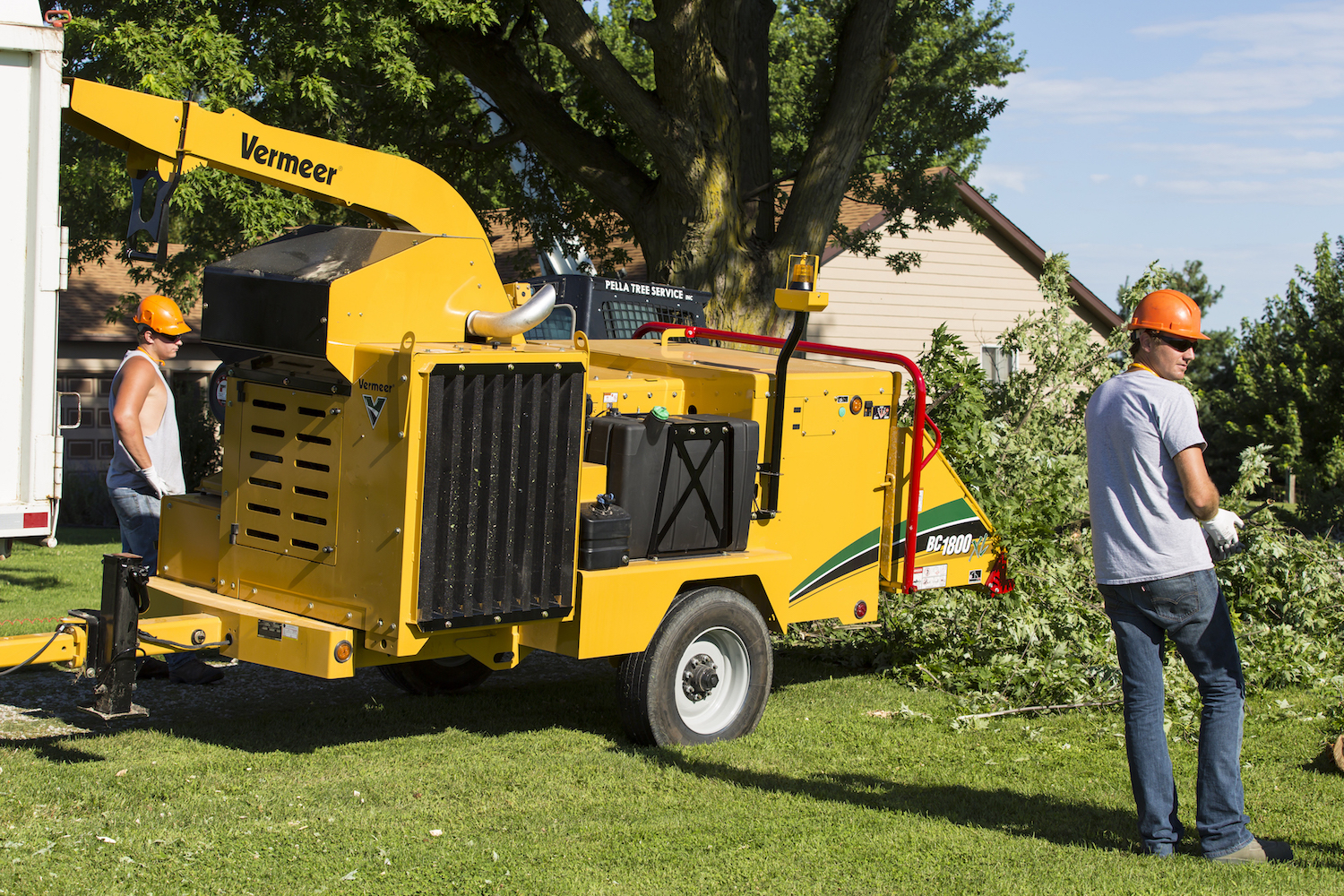We’ve spoken to a lot of tree care contractors over the years, and something we hear quite often is that a rugged, durable brush chipper is the linch pin of their fleet. Effective fleet management often begins with choosing the right chipper for your business. If you buy a chipper that’s too large, you can end up overspending. Too small? You limit the jobs you can take on. When shopping for a brush chipper, you should consider the type and volume of material you will most often be processing as well as how frequently you will be using the machine. That information will help guide you in right-sizing your equipment, so you can maximize productivity while helping to minimize operating costs.
Function drives capacity needs
There are a lot of factors that go into picking a brush chipper, but infeed throat capacity is one of the most important. Understanding which infeed size works best in terms of the size and mass of the wood waste material being processed is important to maximizing efficiency and productivity on a jobsite.
There are two main service functions for a brush chipper. Determining which one applies to your business will help you in deciding what infeed capacity you need.
Trimming – These are jobs that involve processing smaller branches, limbs, slash and brush. A brush chipper with a 9- to 12-inch (22.9 – 30.5 cm) diameter capacity is probably sufficient for your fleet if the majority of your jobs are made up of trimming work.
Takedown – This service function involves removing and processing whole trees. Residential takedowns and commercial land-clearing applications often fall under this category. If your company specializes in this kind of work, a 15- to 19-inch (38.1 – 48.3 cm) diameter capacity chipper is probably a better addition to your fleet.
Why right-sizing matters
Like most equipment purchases, choosing the right size and model is important to overall productivity. If you purchase a chipper that is too small and subject it to materials beyond its capacity, the machine won’t operate efficiently ― likely accelerating aging and wear. On the flip side, selecting a chipper with greater capacity than necessary will likely impact operational costs like fuel consumption.
A good rule of thumb is to purchase a chipper that can handle at least 80 to 90 percent of the tree and brush a contractor intends to chip.
“If the chipper is too small, contractors are going to spend more time maneuvering the material and hauling wood off to other companies’ sites, so that it can be chipped and prepared for dumping,” says Matt Hutchinson, product manager for Tree Care/Rental & Landscape at Vermeer. “Because most dumpsites no longer accept whole trees and large logs, a contractor with a brush chipper that’s too small will likely incur higher tipping fees.”
On the other hand, if you have an 18- or 21-inch (45.7 or 53.3 cm) capacity brush chipper and you’re chipping only 6-inch (15.2 cm) material, you’re wasting fuel running a chipper that’s larger than necessary.
Larger chippers come with more horsepower, but more horsepower comes with more fuel costs. You should make sure you really need all that power for your operation before investing in a chipper.
“If a contractor upgrades to a bigger machine, he may have to get a larger truck — and there probably will be additional fuel costs associated with not only the truck, but also the chipper,” Hutchinson says.
Drum or disc?
As you choose a chipper, consider whether to get one with a drum or a disc cutting mechanism.
Drum chippers were developed to cover wide feed openings and tackle large material, earning a reputation for high productivity, outstanding performance and value. In addition, drum chippers can also be easier on cutter bearings and typically perform better while chipping palm trees and other materials with string fronds.
When disc chippers were introduced, they were seen as more operator-friendly with infeed roller controls and capable of handling a variety of material of all sizes.
Safety
The safety features on a chipper are also an important consideration. For enhanced infeed safety, higher and longer feed tables with upward sloping sides help provide more distance between the cutters and operators. Look for a model with an enhanced upper feed control bar, which offers an additional emergency stop position. Vermeer chippers are equipped with a lower feed stop bar to shut off the feed either intentionally or automatically in an emergency situation.
Disposal
Another consideration: What will you do with wood debris? There is growing demand for wood chips for uses that include mulch, compost and biofuel. Most companies, however, require a certain chip size, so the type and size of your brush chipper will make a difference.
In case you missed it, read our recent blog on resale value and why it’s important to keep in mind when purchasing a chipper.
To learn more about the brush chippers offered by Vermeer, visit our website or contact your local dealer to schedule a demo.
